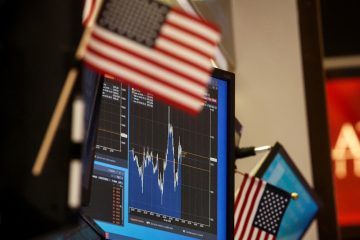Was Gordon Gekko Right?
Gordon Gekko, Oliver Stone’s fictional character from the film Wall Street, made the phrase “Greed is Good” universally accepted among investors. When it comes to actual market timing, though, most traders would be better off feasting on “Fear.”
After a series of large point drops in the DJIA, S&P 500 and Nasdaq indices, CNN reported this week that their ‘Fear & Greed Index’ was registering its highest anxiety reading in a very long time. One month ago, with the indices near all-time peaks, investor sentiment was dead neutral. One year earlier, the mood was quite downbeat ahead of what turned out to be a decent 12-month advance.


The CBOE showed a similar ‘panic mode’ indicator as judged by their put option to call option ratio. That indicator signaled the most put buying by the public in well over a year. Mom and Pop typically only pony up for put protection after large market declines.

Another sign of intense fear came from the “Net New Yearly High v. New 52-week Low” ratio. Subtracting the number of new lows from the new highs almost never yields a negative number. That dubious distinction was reached during this week’s sell-off.

Casual observers might not realize that those negative vibes typically accompany great buying opportunities. Don’t take my word for that. Judge for yourself.
I’ve reproduced CNN’s Fear & Greed chart going back three full years, to the fall of 2011. Then I added the same time period for the S&P 500 ETF (SPY). Not one of the eleven most high-anxiety periods should have been sold.
100% of those nerve-wrecking moments reversed within weeks, leaving many investors stopped out of great positions simply due to temporarily lower share prices.

Can you imagine rushing to sell virtually anything else because buyers kept making you worse and worse offers? Rational people would ignore bad bids while waiting for a discerning bidder willing to pay at least fair value for their merchandise.
Smart shoppers with cash to invest treat market overreactions as gifts. Extreme sell-offs provide chances to get in cheaply. Over-enthusiastic periods allow for cashing out of holdings, often at more than justifiable quotations.
Stop worrying about short-term declines on your monthly statements. Start shifting some of your ZIRP-devalued cash reserves into stocks while others are still fretting.
Greed may be good, but bargains are hard to find when euphoria reigns.
When investing your money, it is completely normal to feel the same scary emotions as everybody else. It is not okay, though, to behave like they do.
Note: I put this article together on Thursday evening, Oct. 2, 2014. As of 2:25 PM on Friday, Oct. 3, 2014, stocks were rebounding nicely – up 216 points on the DJIA.

